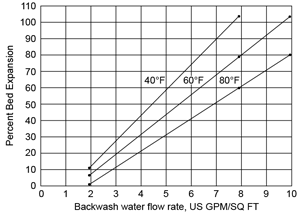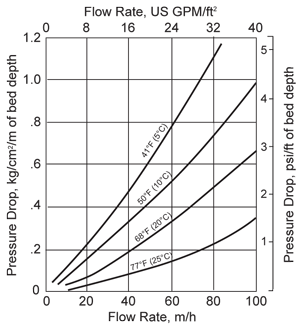ALDEX C-800 Series Resins
C-800 UPS Water Softening Resin Sodium Form
Tested and certified by WQA according to NSF/ANSI/CAN 61 and 372, NSF/ANSI 44 and CSA B483.1. Aldex C-800 UPS is a high capacity, high quality, gel-type cation resin capable of meeting the most exacting requirements of household, farm, commercial, institutional and industrial water softeners. It is supplied in the sodium form as black colored beads in 1 cubic foot bags and larger bulk packages.
Aldex C-800 UPS Technical Bulletin: US units (PDF) | Metric units (PDF) | Français (PDF)
Aldex C-800 UPS Safety Data Sheets: English (PDF) | Français (PDF)
Physical Chemical Properties
| Resin Composition: | Sulfonated styrene / divinylbenzene copolymer |
| Ionic Form as Shipped: | Sodium (Na+) |
| Physical Form: | Black colored beads |
| Moisture Content: | 45-49.9% |
| Total Capacity: | 1.9 meq/ml minimum 41 kilograins as CaCO3 per cubic foot |
| Odor and Taste: | None |
| Specific Gravity: | 1.28 |
| Net Weight (as shipped): | 50 lbs per cubic foot |
| Particle Size: | 20 to 40 mesh - Less than 0.5% through 50 mesh |
Recommended Operating Conditions
| Influent pH: | No restrictions |
| Maximum Temperature: | 250 °F |
| Bed Depth: | Minimum 24” Normal 36” |
| Service Flow Rate: | 1 to 5 US GPM per cubic foot |
| Backwash Flow Rate: | See Fig. 2 |
| Regenerant: | Sodium Chloride (NaCl) or Potassium Chloride (KCl) |
| Regenerant Strength: | 5 to 15%, usually 10% |
| Regenerant Flow Rate: | 0.3 to 1.0 US GPM per cubic foot of resin |
| Regenerant Contact Time: | 15 to 60 minutes |
| Regenerant Dosage Level: | 2 to 15 lb per cubic foot |
| Slow Rinse (Displacement) Flow Rate: | 0.3 to 1.0 US GPM per cubic foot of resin |
| Slow Rinse Volume: | 20 USG per cubic foot resin |
| Fast Rinse Rate: | 1.0 to 5.0 US GPM per cubic foot resin |
| Fast Rinse Volume: | 30 USG per cubic foot resin |
C-800 UPS Features
No Chlorinated Solvents
The absence of chlorinated solvents in the manufacturing of Aldex C-800 UPS results in very low TOC leakage.
Very low color, taste or odor
Aldex C-800 UPS meets the requirements for paragraph 173.25 of the Food Additive Regulation of the U.S. Food and Drug Administration.
High Capacity
30,000 grains of softening capacity when regenerated with 15 lbs of NaCl per cu. ft. and 20,000 grains with 6 lbs of NaCl per cu.ft. ensuring high efficiency and low operating costs.
Long Life
Strong and durable beads ensure long service life.
Reliability
Aldex Chemical has over 40 years of actual field usage by thousands of customers demonstrating the reliability of Aldex ion exchange resins, zeolites and other water treatment media.
Safety Information
A material safety data sheet is available for Aldex C-800 UPS. Copies can be obtained from Aldex Chemical Co., LTD. Aldex C-800 UPS is not a hazardous product and is not WHMIS-controlled.
Caution: Acidic and basic regenerant solutions are corrosive and should be handled in a manner that will prevent eye and skin contact. Before using strong oxidizing agents in contact with ion exchange resin, consult sources knowledgeable in the handling of these materials.

C-800 UPS Operating Suggestions
Iron
Aldex C-800 UPS will remove most of the dissolved iron, can filter much of the suspended iron and may or may not remove organically bound iron from water.* When softeners are used to remove iron from the water, periodic cleaning of the bed mechanically or with a chemical iron cleaner may be necessary.
*The removal of iron was not evaluated in the WQA certification.
Chlorine
All cation exchange resins are affected by chlorine and suffer degradation and swelling. It is recommended that the chlorine in the water be maintained below 1.0 ppm when using Aldex C-800 UPS.

Fig. 1 Exchange capacity vs. regeneration level Sodium form C-800 UPS Cation Resin
Backwash Characteristics
Aldex C-800 UPS should be backwashed for at least 10 minutes after each service cycle in a conventionally down flow regenerated softener. To reclassify the beads and remove suspended solids from the top of the bed, the resin bed should be expanded at least 50% according to Fig. 2.

Fig. 2 Bed expansion vs. backwash flow rate for various water temperatures
In the case of non-conventional or upflow regenerated softeners, it may not be necessary to follow the above procedure since the backwash and brine injection is incorporated in the same step.
Pressure Drop
Figure 3 shows the expected pressure loss per foot of bed depth as a function of flow rate at various temperatures.

Fig. 3 Pressure Drop vs. Flow Rate